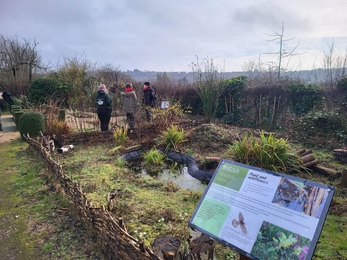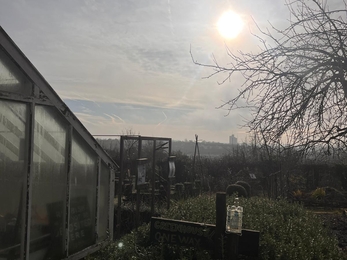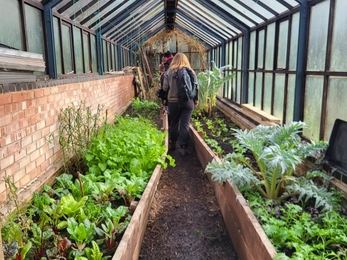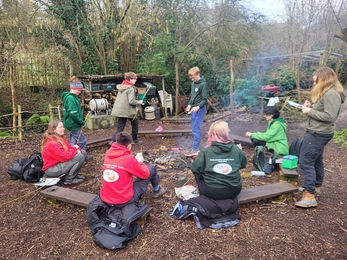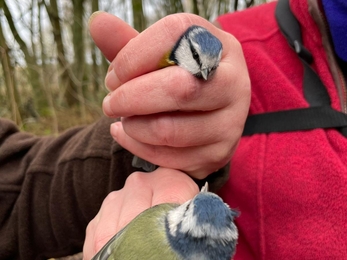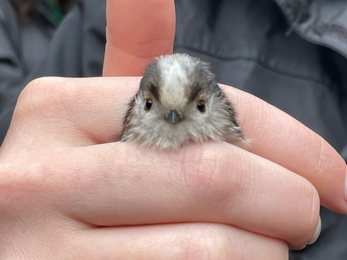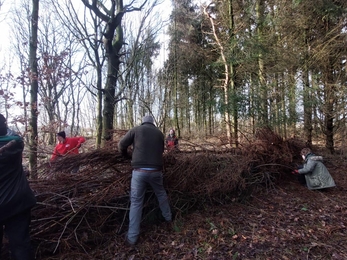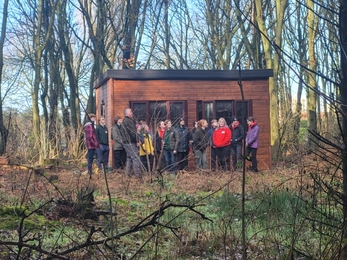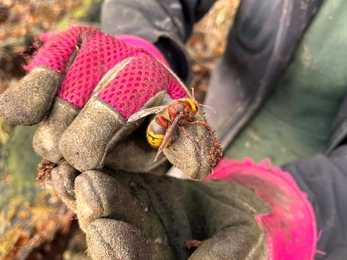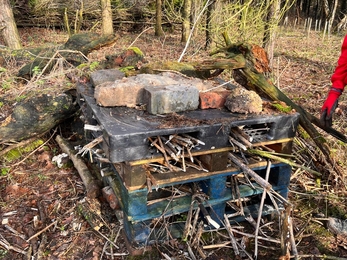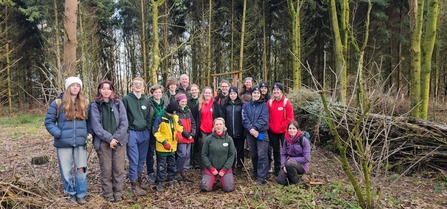We began the weekend with excitement and anticipation, as none of us had ever visited St Anns Allotments (STAA) before. Our exploration of the site began with a warm welcome from Sarah, who works passionately for STAA. Guided by Sarah, we start our adventure around the 70+ acres of allotments. I begin to feel completely immersed as we navigate the site - with the never-ending symphony of birds calling, and the soothing sound of rustling leaves. The winding paths and boundless stretch of verdant hedgerow makes me feel as if I am in the Labyrinth - only we are much more likely to encounter a song thrush or bullfinch than meet the Goblin King. There were also drooping blooms of snow drops scattered across the site, creating a beautiful and delicate carpet. They reminded me that even though the world is currently lying dormant and cold, there are brighter skies imminent.
On the agenda at the allotments is a journey around the meticulously managed "Oliver’s" Heritage Garden and a visit to the Urban Nature area - both of which were an oasis of wildlife, even on a foggy Saturday in February. The heritage garden transported me back to the 19th Century, when residents would stroll around the site, as a retreat, to escape the confines of an industrial and built-up city - or what could be called a ‘concrete cocoon’. We were given the task of looking for species and some key features of "Oliver’s" garden, all of these being a sign of spring. One of these was the herald of spring, Hazel catkins - they could be spotted from distance, their golden and yellow hue contrasting the muted pallet of a misty mid-winter morning.


